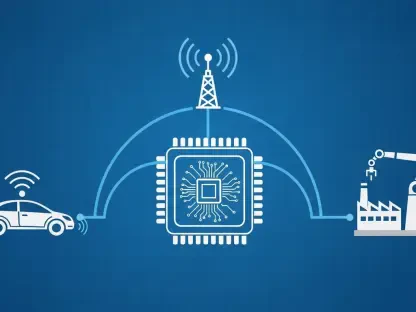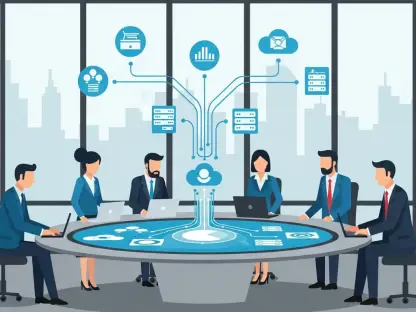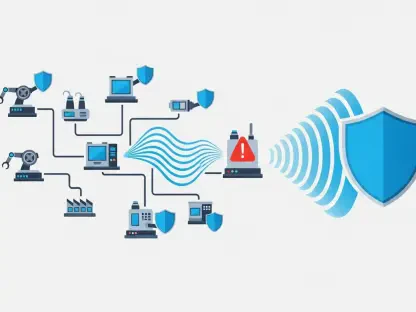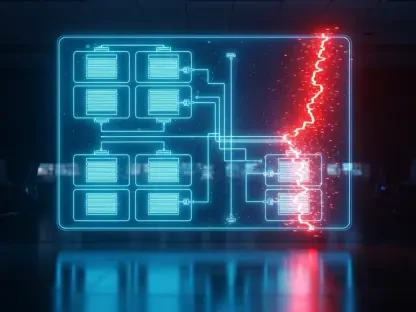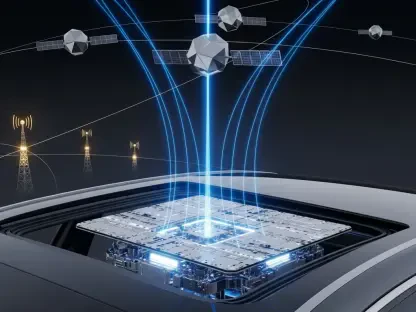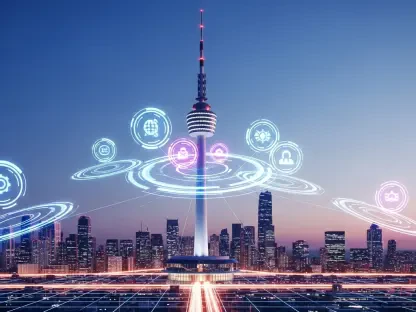As 5G networks continue to expand across the globe, a staggering projection reveals that mobile networks could consume up to 5% of global electricity by the end of this decade, driven largely by energy-hungry base stations, posing a significant challenge to sustainability goals. This unprecedented demand arises in an era where Industry 4.0 drives relentless connectivity and data growth. With environmental and economic stakes at an all-time high, the telecommunications sector stands at a critical juncture. This trend analysis dives into how Open Radio Access Network (O-RAN) solutions are emerging as game-changers, offering innovative strategies to curb energy consumption. The discussion will explore the scale of the energy challenge, groundbreaking research, expert insights, and the promising future of energy-efficient 5G networks.
The Energy Challenge in 5G Networks
Escalating Power Demands and Environmental Concerns
The rapid rollout of 5G technology has brought with it a sharp rise in energy consumption, with base stations accounting for nearly 80% of the total power used by mobile networks. Projections from recent studies suggest that without intervention, this sector could significantly contribute to global electricity usage, straining resources and amplifying carbon footprints. Reports from leading industry bodies highlight that unchecked growth in 5G infrastructure could undermine international climate commitments, making energy efficiency not just a technical issue but a pressing environmental priority.
Beyond the raw numbers, the economic implications are equally daunting for network operators. Rising operational costs tied to energy use threaten profitability, especially in regions with high electricity prices or limited access to renewable energy. The dual burden of environmental impact and financial strain underscores the urgency of finding sustainable solutions that can scale with the expanding 5G landscape.
Practical Implications and Immediate Needs
Delving into specific inefficiencies, a major concern lies in excessive idle power consumption during low-traffic periods, where traditional energy-saving tactics like reducing transmission power often fall short. Power amplifiers, critical to 5G performance, also present challenges, as they consume substantial energy at high radio frequency levels while losing efficiency at lower settings. These technical hurdles reveal gaps in current network designs that must be addressed to achieve meaningful reductions in power usage.
The broader impact of these inefficiencies affects not only operational budgets but also the telecommunications industry’s role in global sustainability efforts. As governments and organizations push for greener practices, network operators face mounting pressure to align with these goals while maintaining service quality. This balancing act highlights the immediate need for innovative approaches to energy management within 5G ecosystems.
O-RAN Innovations Driving Energy Efficiency
Collaborative Efforts and Testing Frameworks
A pivotal step toward addressing 5G energy challenges comes through the collaborative work of entities like the Open Networking Foundation/Aether Project, Rutgers University WINLAB, and Keysight Technologies. Their joint research focuses on optimizing the O-RAN Radio Unit (O-RU), a primary power consumer in modern networks. By leveraging open standards, these groups aim to create adaptable and efficient solutions that can be widely adopted across the industry.
Central to this effort is the POET (Platform for O-RAN Energy Efficiency Testing) testbed, a specialized tool designed to measure power consumption under varied conditions. Testing spans diverse scenarios, from small cells in urban environments to macro cells in rural areas, providing comprehensive data on how O-RUs perform. This platform fills critical gaps in understanding energy metrics, paving the way for targeted improvements in network hardware and configurations.
Significant Findings and Technological Advances
The research yields crucial insights, such as the wide variation in energy efficiency among different O-RUs, suggesting that hardware design plays a substantial role in overall consumption. Another key discovery centers on load management, where strategic adjustments during low-traffic periods can significantly cut power usage without compromising performance. These findings challenge conventional approaches and point to actionable strategies for network optimization.
Additionally, the studies highlight the benefits of MIMO (Multiple Input Multiple Output) configurations, which offer capacity gains with only marginal increases in energy draw, marking them as an efficient choice for 5G deployments. A validated power model further enhances these efforts by categorizing consumption into static, idle, and dynamic components. This breakdown provides a clear framework for predicting and reducing energy use, offering a robust tool for future innovations in the field.
Expert Perspectives on O-RAN and 5G Sustainability
Industry Insights on Energy Optimization
Leaders and researchers in the O-RAN space emphasize that hardware advancements are only part of the solution to 5G’s energy woes. Many stress the importance of smarter power management systems that dynamically adjust to network demands, minimizing waste during off-peak hours. Their collective viewpoint underscores a shift toward integrating intelligence into network operations to achieve long-term sustainability.
Challenges and Standardization Needs
Another recurring theme among experts is the need for standardized efficiency metrics to ensure consistent progress across the industry. Without uniform benchmarks, comparing solutions or setting realistic targets becomes difficult, potentially slowing the adoption of best practices. Some also caution that balancing energy savings with network performance remains a complex challenge, requiring careful calibration to avoid service disruptions.
Holistic Approaches to Sustainable Networks
Experts further advocate for a multifaceted strategy that combines technological innovation with policy support. They argue that while O-RAN offers promising tools, broader industry collaboration is essential to scale these solutions globally. This consensus reflects a growing recognition that sustainability in telecommunications must be a shared responsibility, uniting hardware manufacturers, operators, and regulators in a common goal.
Future Directions for O-RAN Energy Solutions
Real-World Applications and Testing
Looking ahead, initiatives like testing at the NTIA-funded ORCID Lab are set to bridge the gap between research and practical deployment. By incorporating commercial O-DUs (Distributed Units) and multi-band O-RUs, these efforts aim to validate lab findings in real-world environments. Such steps are critical to ensuring that energy-efficient designs can withstand the rigors of actual network operations.
Emerging Technologies and Optimization
Exploration of machine learning for real-time energy optimization marks another exciting frontier. Algorithms capable of predicting traffic patterns and adjusting power settings dynamically could revolutionize how networks manage resources. While still in the early stages, this technology holds potential to further reduce consumption, especially in densely populated urban centers with fluctuating demand.
Broader Implications and Potential Hurdles
Enhanced energy efficiency through O-RAN could yield significant benefits, from lowering operational costs for providers to reducing environmental impact amid soaring data needs. However, challenges such as high initial investment and interoperability issues with legacy systems may hinder widespread adoption. Addressing these barriers will require sustained commitment from industry stakeholders to prioritize long-term gains over short-term costs.
A Sustainable Path Forward for 5G
Reflecting on the journey so far, the telecommunications industry has grappled with the immense energy demands of 5G networks, uncovering critical inefficiencies through rigorous research. O-RAN emerged as a beacon of innovation, delivering actionable insights and frameworks that reshaped approaches to power consumption. The collaborative spirit of these efforts underscored a shared resolve to tackle both technical and environmental challenges head-on.
Moving forward, the focus shifts to scaling these solutions, with real-world testing and emerging technologies like machine learning poised to drive further progress. Industry players are urged to invest in standardized metrics and cross-sector partnerships, ensuring that energy efficiency becomes a cornerstone of future network designs. This path promises not only reduced carbon footprints but also a resilient foundation for the ever-growing digital landscape, setting a precedent for sustainable innovation.


